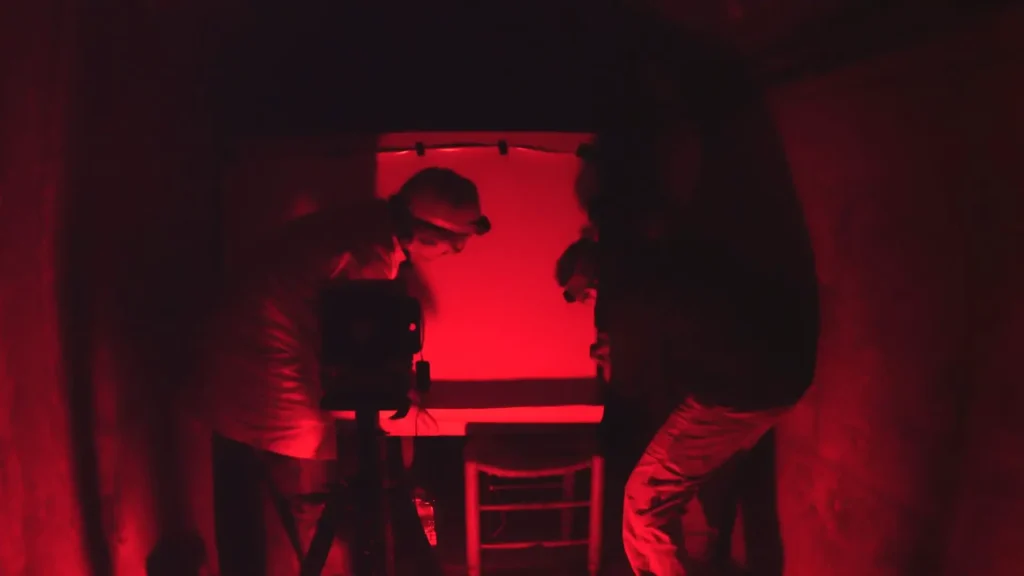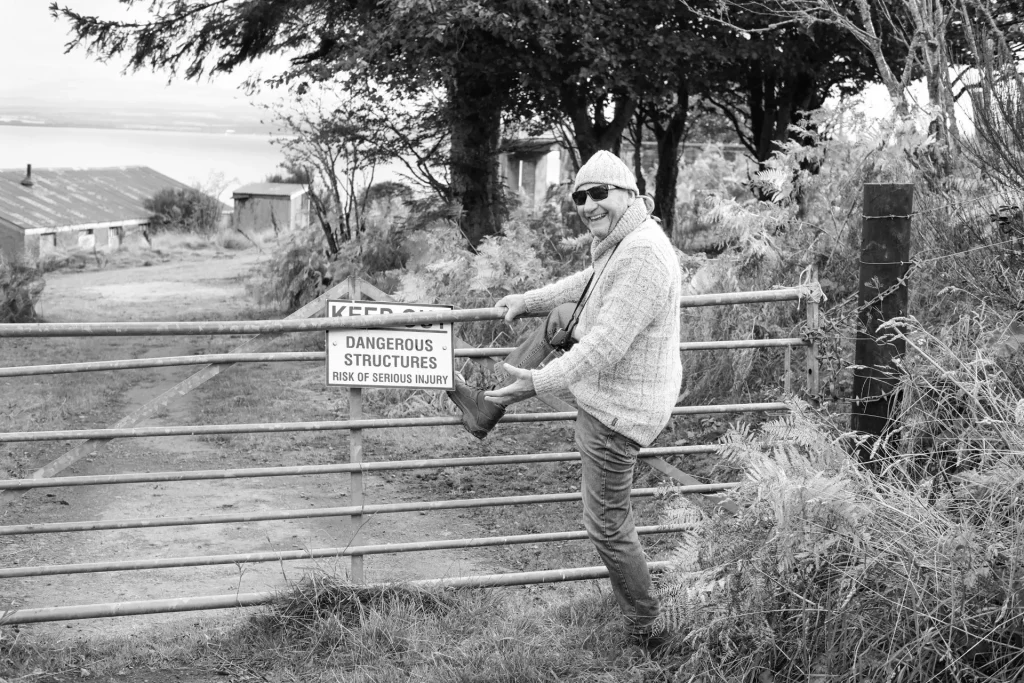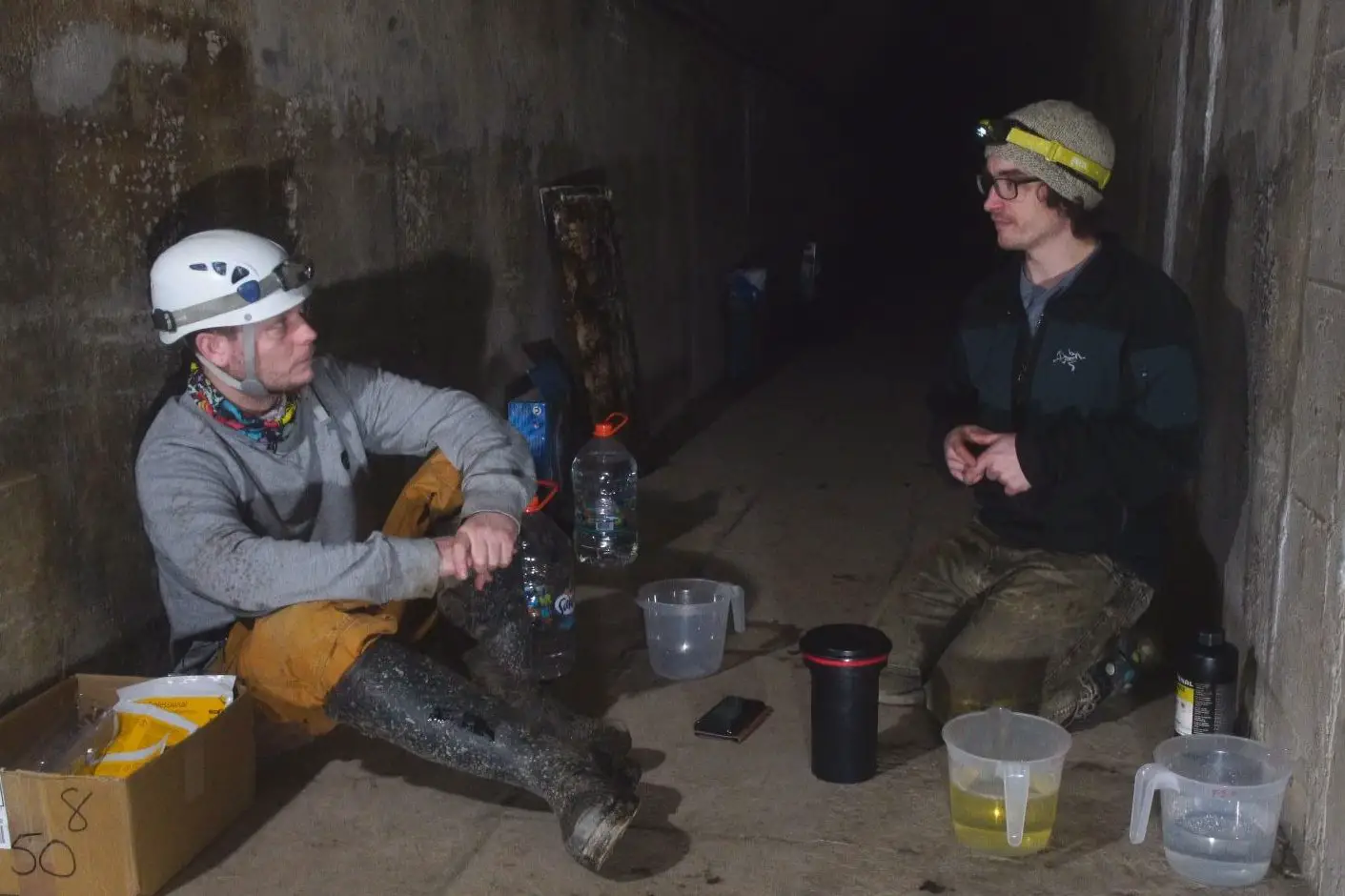The above video is a bit of a preview of the forthcoming documentary film ‘Simon and Dave’s One Shot: Inchindown‘. I’ve been lucky enough to see an early draft of the entire film, have been helping the guys promote it in the little ways that I can, and am even hosting one of the first showings of the film in December in Worcester – more info on that here.
As such, I’ve been talking to all sorts of people about the film, yet every time I describe it to people I get the same question: “Why?” Why did they shoot it on film? Why did they make it so hard for themselves? Why did they print the photo so big? The more I’ve been asked the question, the more it’s had me wondering about these questions myself. So I thought I’d ask them in the form of a bit of a twitter DM interview. The following is how that conversation went.
H: So, first question. Your film ‘Simon and Dave’s One Shot: Inchindown’ What is this film about? Fewest words possible. Go!
D: The film is about challenging ourselves as photographers in a crazy-gnarly location; to do something most darkroom photographers would caution us as being “some dumb ass sh*t”.
Or, rather, it’s about us building the world’s largest darkroom in a place where you wouldn’t want to build a darkroom.
S: Two guys, one tank. Large Format to the max. Easel peasels. What’s question numero two?
H: Ok, so I’m coming at this interview having seen the whole film. Most people reading this so far won’t have. This is my summary:
Two blokes go into a pitch black, difficult to access inhospitable place to take a very difficult-to-take photo with a big film camera and then create a very large print of that photo in the same conditions – conditions that are quite specifically not conducive to printing in. In fact, as far as I can work out, the only factor in this whole project you had going for it is that the space was dark enough to be a darkroom. Pretty much everything else was against you.
In fact, if I were to write a short synopsis, I’d probably just go with: “two blokes did their utmost to make their the process of taking a single photo intentionally difficult for a few days”
Would you say all that is fair?

D: Extremely fair. That about sums it up
H: So what’s the deal here? I mean, why not just take street photos with a Leica or something like normal film photographers do?
D: Both Simon and I need projects that challenge us. Also, I can’t afford a Leica. For me, photography replaced mathematics in my life. I need challenges to push myself as a photographer. This seemed an interesting challenge in that way. Neither of us had printed that large before. If we could do it in those conditions, we could do it anywhere.
Also, Simon uses photography to deal with PTSD from the untimely passing of his dad. Challenges help him focus. And, in fact, we dedicate this film to his father. And yeah, I can’t afford a Leica.
H: Ok. This is what I was trying to get to. I think a lot of people see photography as being about the end result. Of course the end result is important, but this is a film about the process. Process as an experience, process as something that’s of value to the photographers taking part in it.
Do you think this film makes a point to the sorts of people who would question “why” make it so hard for yourselves? Was that your intention when setting out?
D: I guess it was more of a hope that people might say “if these guys can make a solid print in the worst of possible locations, then maybe I can do this in my bathroom or whatever”. I see a lot of people hesitant to process at home, or print themselves – not for time or budgetary reasons – but because they think they need more gear and skill than they actually need.
Personally, I care about the end result in my photography. But, pushing myself in the “process” has gotten me to places where I can achieve results that I would have otherwise thought impossible
S: Dave and I are similar in the fact that we like challenges and problem solving – couple that with analogue photography and building stuff, and you have the “Danger Boyz”. Our projects also often involve risking life and limb to get it done and we thrive on the challenges that creates for us.
There’s a lot more to photography than a print for me. I want to have an adventure that makes taking a photo memorable. For me, the more extreme that adventure is, the better.
As regards the PTSD Dave mentioned, yes, photography helps with that. When I feel immersed in the process, it totally engages me and helps my mind from straying to other thoughts that can otherwise creep in and blindside me. I find it a lot easier to re-engage with the good stuff when the good stuff is so engaging.
I liken it to riding a motorbike at high speed, or skydiving, or something else with masses of adrenaline. These things used to be my go to remedies for a release. With photography like this I can get just as immersed as I would do with the previous options, but am also being creative and productive at the same time.
H: Ok, so that’s interesting. In some ways you guys differ in your view/approach then? For Simon it’s more about the experience, for Dave the end result is more important?
S: I want to make the best thing, be that a neg, a print, whatever. But I’ll wing it more times than I will be really critical about process etc. I’ll hardly ever do a test strip for example.
D: Yeah, I guess I’m more process agnostic at large. I don’t care if people create using digital or film, for example. And, while I value the process, I probably value it more for the end result than Simon might. So, in short, “yes.”
S: Haha. For sure
D: If people like an image I made just because it was done on film, I’m not happy. Sadly this is often the case.
H: So maybe you’re a team then? Two halves of that add up to something greater than the sum of you as individuals?
S: Haha! Definitely! I put up with Dave’s maintenance issues to allow him to become great. Joking aside though, I think it’s awesome how film photography can bring together a team that achieves something cool. Beyond even that though, this project has allowed me to pay tribute to my relationship with my Dad. I asked Dave if we could dedicate the film to Dad, his reply was “sure”. That’s brothers for life…

H: That’s a wonderful thing!
Ok, so cutting to the chase a little, and I guess this question is aimed at Dave. Why film? Why not just shoot it with a digital camera?
D: For me, the challenge of doing these things on film pushes me down creative routes I wouldn’t have found otherwise had I taken the path of least resistance. In fact, I was the one who insisted that we should limit ourselves to one shot.
I think everything possible on digital is possible on film (even considering Photoshop). That doesn’t mean it’s easy or evident. Creative solutions are needed and it is often those solutions that inform later work. Does that make sense?
H: Yeah, so this is a process of working within constraints for the net benefit of the end result?
D: Yes. The net benefit of all my subsequent photography, in fact. I don’t want to make photography anyone can make, no matter how well executed. As such, taking the same routes as everyone else seems counter-productive.
H: Ok, so ultimately this is perhaps simply about doing something different then? In a world that feels filled with people taking the same street photos with the same Leica cameras, this is two blokes exploring the peripheries of the possible in the hunt for something new…?
D: That’s a good way of putting it, yes.
H: Ok then, last question. With what you have experienced in mind, what one tip would you give to readers of 35mmc? …apart from the obvious “watch our film!”
D: Don’t wait until you feel “competent” at something before you try pushing it. Push yourself, competency will come as a byproduct.
H: Simon?
S: F**kin sames, init. Well said Dave…
H: Ok, finally, where do you want people to go? Where can they watch the film and how, and where else on the internet can you be found?
S: More info about the film including screenings can be found on our website: inchindown.com
If we don’t find a distributor by mid-December, we’ll make it available on-demand and to buy via Vimeo, Amazon, and (possibly) iTunes. For info about all that and more, keep an eye on our social media:
Facebook: facebook.com/tankymconeshot
Twitter: twitter.com/tankymconeshot
IG: instagram.com/tankymconeshot
H: Great thanks guys! Really looking forward to welcoming you into the Kiln for the Worcester showing in December. Exciting times!
Share this post:









Comments
No comments found